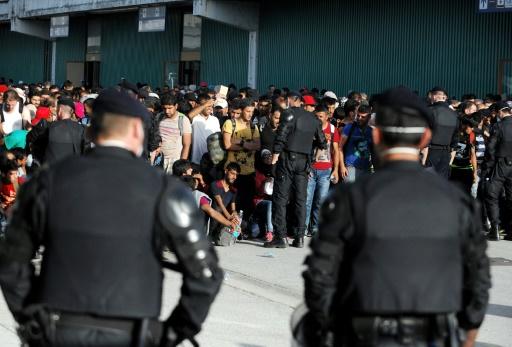Bosnia and Herzegovina – Since the beginning of the migratory crisis in the Western Balkans in 2014 (when in the autumn of 2014 a first massive wave of migrants coming from Kosovo arrived at the Serbian-Hungarian border), the routes used by the migrants wishing to go to Western Europe have changed quite often, due to the more or less important efforts consented by the transit countries for not accepting the violation of their borders.
The closing of the Hungarian-Serbian and then also the Hungarian-Croatian border by the Hungarian government of Viktor Orbán prompted the migrants to move towards Croatia and Slovenia for reaching Austria and Germany.
This new migratory route, that lasted only a very short time but saw the transit of a considerable number of people in a very short time (around 600.000 people in 4 months) stopped functioning during the winter 2016 when the Austrian government made a complete flip-flop about its migration policy. The data delivered by the Croatian Interior Ministry were not supplied after 26 January 2016 any more.
Since then, the migratory route of the Western Balkans stopped being a main axis for migration towards Europe, while Italy came back into this position. However, the migratory route of the Balkans did not totally stop existing:
– between 50.000 and 80.000 migrants were still available within the transit countries, in particular in Serbia
– new arrivals, though less numerous, still happened (with Serbia and Turkey as countries of entrance, which air roads are less limiting than the ones of countries of the European Union for third country nationals)
– some attempts to circumvent the Hungarian barrier (through Romania or Croatia and in particular through the Croatian-Serbian border)
However, the controls at the Hungarian-Romanian and Serbian-Croatian borders have still prevented most of the migrants of continuing their way further to Germany until now. It is then henceforth through Bosnia-Herzegovina that they are trying their chance, as some press articles are reporting it.
As the border between Croatia and Bosnia is poorly monitored – especially on the trails – more and more migrants are spotted in Croatia in the region of Karlovac (and more particularly in Budačka Rijeka this week-end), that is also not so far from Slovenia. Some houses were also squatted as the inhabitants of the region reported.
Though these are for the time being only a few groups of some dozens of migrants each that were spotted here and there, the arrival of summer and the instantaneous diffusion of information through the world (the migrants are as well connected to information and GPS through their smartphones as any other citizen in the world), it is not to be excluded that Bosnia would become a transit region for some thousands or dozens of thousands of migrants in the months ahead, all the more as the original entrance doors (particularly Greece) of the Balkan route are still as porous as before.
The Croatian authorities have made no communication and did not answer to any request about it until now. More generally, since the beginning of the migratory crisis in the Balkans, the Croatian authorities have always shamelessly accepted the role of a transit country for Croatia and are the ones who observed the greatest discretion, ignoring the issue or organising, very discretely and without it to disturb too much the life of its own citizens, the transfer of the migrants until the next country on the migratory route (i.e. Slovenia), or in restoring border controls when the transit route was blocked. It remains to be seen whether this situation will last for the case the number of illegals coming from Bosnia would increase and if the Slovenian authorities would react on it.




